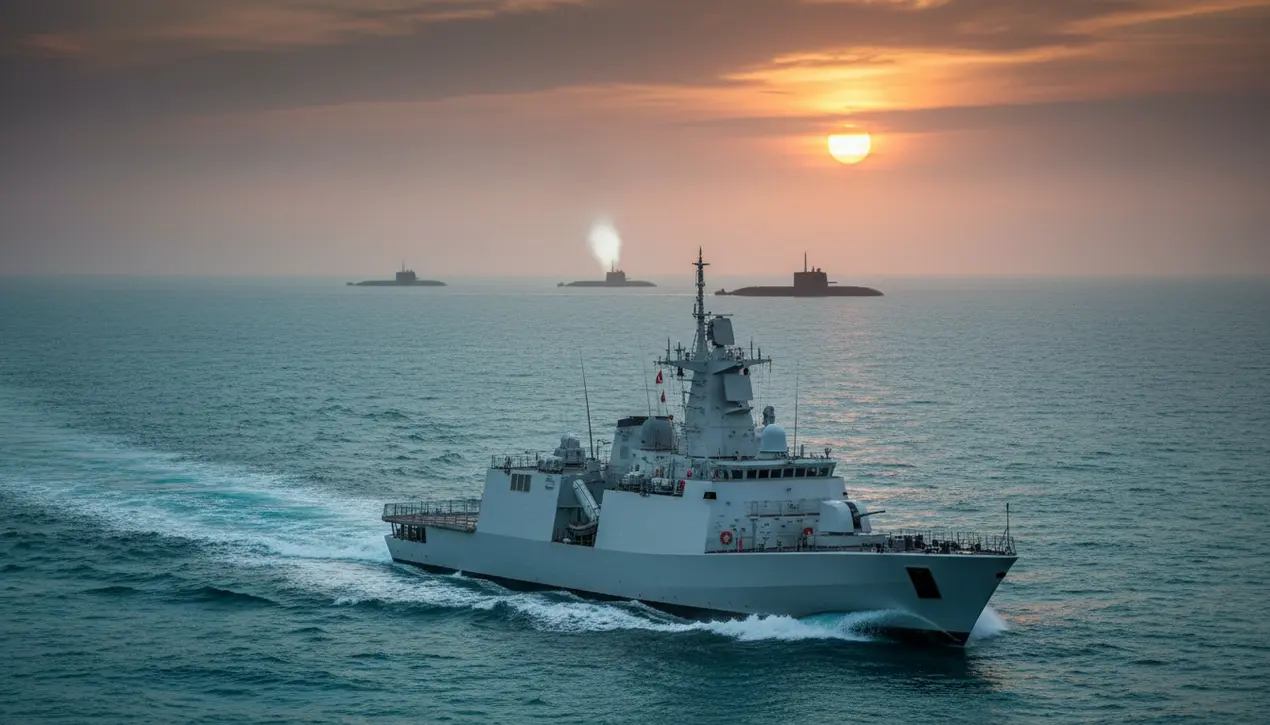
Politicsconflict & defenseMilitary Operations
India's Submarine Gap Amid China-Pakistan Naval Cooperation.
OL
Oliver Scott
16 hours ago7 min read1 comments
The launch of India's first indigenous anti-submarine warfare ship this Monday represents a tactical maneuver in a high-stakes naval chess game, yet it does little to close the alarming capability gap emerging in the Indian Ocean. The core vulnerability, as risk analysts have been warning for years, lies in the Indian Navy's sclerotic conventional submarine modernization program, a failure in strategic foresight that is now colliding with a formidable new reality: Pakistan's imminent acquisition of eight Hangor-class submarines from China.These are not mere vessels; they are game-changers. Equipped with air-independent propulsion (AIP) technology, these submarines can remain submerged for weeks, operating with a stealth that renders traditional detection methods nearly obsolete.This creates a multi-layered risk scenario for New Delhi. The immediate threat is a potent denial-of-area capability for Pakistan, effectively bottling up Indian naval assets and threatening critical sea lanes.But the broader, more systemic risk is the deepening symbiosis of the China-Pakistan naval axis, a partnership that extends beyond a simple arms sale into joint development and strategic posturing. Beijing is not just selling hardware; it is exporting a full-spectrum anti-access strategy, leveraging Pakistan's geographic position to complicate India's maritime dominance from the Arabian Sea.This forces India into a reactive, costly posture. While it publicly touts its 'Make in India' triumphs like the new anti-submarine ship, the subsurface picture tells a different story—a fleet of ageing German-origin HDW and Russian Kilo-class submarines, with the much-delayed Project 75I languishing in procurement purgatory.The strategic consequence is a classic security dilemma. Every move India makes to bolster its local defense industry, while commendable for long-term self-reliance, is outpaced by the rapid, centralized decision-making of its rivals.The risk calculus now must account for a future where a coordinated, two-front naval pressure from China in the Bay of Bengal and these new AIP submarines from Pakistan in the Arabian Sea could stretch Indian maritime resources to a breaking point during a crisis. This isn't merely about counting hulls; it's about the quality of technology and the speed of deployment.The Hangor-class, based on China's proven Yuan-class design, represents a generational leap. Without an equivalent AIP-equipped fleet or a radical acceleration of its own submarine programs, India faces a future where its numerical advantage is neutralized by a qualitative deficit, a precarious position for a nation whose economic ambitions are inextricably linked to its command of the seas.
#India
#Pakistan
#China
#Submarines
#Naval Power
#Defense Modernization
#AIP Technology
#featured
Stay Informed. Act Smarter.
Get weekly highlights, major headlines, and expert insights — then put your knowledge to work in our live prediction markets.
Comments
Loading comments...
© 2025 Outpoll Service LTD. All rights reserved.